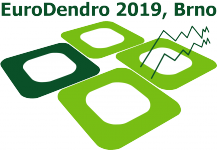About the Czech Republic
The Czech Republic is a landlocked country in Central Europe bordered by Germany to the west, Austria to the south, Slovakia to the east and Poland to the northeast. The Czech Republic includes the historical territories of Bohemia, Moravia, and Czech Silesia. The Czech Republic covers an area of 78,866 km2 (30,450 sq mi) with a mostly temperate continental climate. It is a unitary parliamentary republic, with 10.6 million inhabitants; its capital and largest city is Prague, with 1.3 million residents. The Czech Republic is a member of the European Union (EU), NATO, the OECD, the United Nations, the OSCE, and the Council of Europe.
The Czech Republic uses its own currency, the Czech crown, Česká koruna (CZK).
Travel information
By railway and bus
Brno, main station (main lines Budapest – Bratislava – Brno – Prague – Berlin, Warsaw – Olomouc – Brno – Vienna) – there are connections from and to most European cities. For train and bus connections inside Czech Republic as well as international connections visit this link.
By plane
Closest airports (ranged by distance): Brno, Bratislava (Slovakia), Vienna (Austria), Prague (Czech Republic)
Brno Airport (BRQ) – only limited regular connections from London (Standsted) and Munich and seasonal and charter connections form another destinations – visit this link.
From Bratislava Airport, Vienna Airport and Prague Airport there are bus and rail connections. Check Student Agency or FlixBus buses.
By car
From Poland: use the motorway D1 – Ostrava – Olomouc – Brno.
From Germany – Berlin: use the motorway D8 to Prague then D1 to Brno.
From Germany – Munich: use the motorway D5 to Pilsen (Plzeň), Prague and then D1 to Brno.
From Austria — from Vienna use the motorway A5
From Slovakia — from Bratislava use the motorway D2
